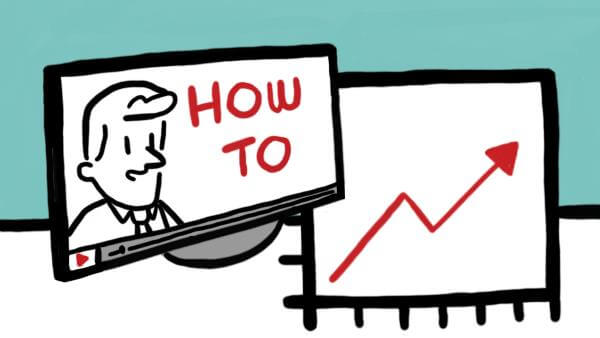At TruScribe, if we often say that whiteboard video is great for any topic. But it’s absolutely necessary for tougher topics. Human Resources compliance training sessions and presentations are often seen as tough topics, as they’re frequently lengthy and rather dry.
So how can your HR department use whiteboard video content to make training and presentations more engaging and retainable?
Company Overview Videos
Let’s start at the beginning: use whiteboard video content in HR training to introduce your company and its key personnel. Use whiteboard video’s visual storytelling ability to show trainees their company’s history and give them a high-energy welcome.
Include some touches from your CEO or other leaders. Consider having a high-ranking team member provide the voiceover. When appropriate, include them in the visuals. Use whiteboard video to take your HR introduction from basic to truly memorable.
Corporate Values Videos
The same whiteboard video that can be used to provide history and introduce team members can also be used to introduce company values. With hand-drawn images reinforcing your voiced script, you’ll expect 65% of the information you transmit to be retainable within 72 hours. That’s a major boost in retention for a topic that, despite its importance, often goes unremembered after onboarding paperwork is signed.
Much like including a CEO’s voice in whiteboard video can help onboarding become more relatable and upbeat, adding current employees’ input to whiteboard training videos can make the learning process easier. Fill your script with testimonials from employees, and choose images that reinforce their statements and drive engagement. Beyond an introduction to leadership and a first blush with company culture, employee testimonials can capture a position’s responsibilities and set expectations for viewers.
Invest in Whiteboard Video for Long-Term Savings
Using video in training won’t just make introducing your culture, personnel, and mission statement clearer. It’ll make your actual training cheaper and easier. With video, you can forget the fees associated with hiring a classroom trainer; you can also forget about those fees changing depending on the number of sessions, size of the audience, and so forth.
You also won’t have to worry about peoples’ differing pace of learning: if employees learn best in non-classroom settings, they can watch your video on their own time instead. Distractions, like conversation, room temperature, or other frustrations also fall by the wayside when a video can be watched in any place, free of interference.
Your Content Will Last
Whiteboard training videos can and should be made to be evergreen, as well. This means that your video remains relevant and rewatchable long after its debut. It remains usable for different audiences over time. In fact, it remains usable even for the same audiences. Employees can rewatch video whenever they like to refresh themselves on policy. They don’t have to worry about taking up work time with questions about a one-time session.
Of course, as training materials change, you may have to edit or refilm your video. But compared to the opposite approach, these changes will be cost-effective and infrequent.
Your Content will Connect
Finja Kruse points to the interactivity of video as another reason HR professionals should use it in training. In the world of whiteboard video, we describe ‘interactivity’ more as the presence of a call to action. The “clear directions” given at the end of a whiteboard video are a great way to make your message actionable. With training, action is exactly what you want to encourage. Whiteboard is uniquely suited to driving engagement up and increasing rates of retention. So take advantage of employees recalling more of your message and include a call to action that will tell them what to do with it.
Whiteboard Video is an Opportunity for Collaboration
Now, whiteboard video isn’t something that you just decide to use, and then use—it’s something you’ll have to produce. This is a great time to involve team members and lean into the collaborative aspects of whiteboard content creation. Partner with professionals and include feedback from your team, whenever reasonable.
Training materials usually give off the feeling of coming from ‘on high,’ and of being a set of rules with little flexibility or relatability for new hires. Combat that perception by using team-made videos, either in-house or in partnership with a whiteboard video production company.
When training materials are curated by a host of fellow employees, they’re more accessible. Add some humor to your script and drawings, and your viewers will see training materials even more positively.
Keep it Brief
Finally, follow the rule of video content creation across the board: keep your video brief. Don’t hinder the engagement bonus of whiteboard video by exhausting the patience of your viewer with a twelve-minute runtime. Create instead a series of shorter videos, each addressing a topic thoroughly but briefly. These shorter videos are more likely to be watched and watched in their entirety.
Sometimes, Human Resources compliance training sessions and presentations could use a boost of viewer engagement. With whiteboard video, you’re likely to see not only higher engagement with HR training materials, but a higher rate of retention. You’re also likely to see lower costs, accurate expectations for new employees, the team-building fun of collaboration, and more.
Does your company currently use video content in its HR training materials? Do they use whiteboard video?
How has training changed since you were hired, and what would you want from a training session if you were a new hire? Would you prefer to watch video?

